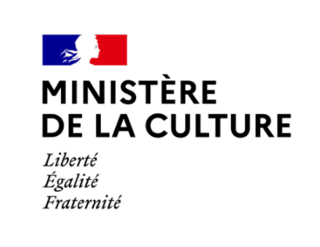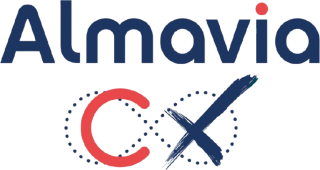Challenges
- The main site had a lot of content but was difficult to search or navigate because content was not tagged
- The ministry had over 200 sites, many of which were obsolete and posed a security risk
- Accessibility score was low
- Content editors wasted a lot of time uploading or adapting content
- Too many sites were created ad hoc for specific events; this needed to be templated and consolidated
Project Summary
- Huge project of rationalization to completely delete obsolete sites or preserve content from others
- Migration to Ibexa technology
- Integration with Syllabs to tag 30,000 pages of content; integration with Algolia for next-level intuitive search
- Creation of template sites for cultural events
- Introduction of modify button to enable 100-120 editors to directly access back office to make changes
Business Benefits
- Digital estate reduced by 50 sites; another 80 due to go in 2022.
- Footprint is much more centralized.
- Content is much more searchable; visitor numbers are up.
- Contributors spend much less time managing the site
- Event sites are easy to create from the single instance of Ibexa DXP
- Accessibility is much improved
Project to rationalize site sprawl
The modern Ministère de la Culture was established by President de Gaulle in 1959 with the mission to protect French cultural identity through the promotion of the arts at home and abroad. More than 60 years on, the Ministry also oversees the national museums and monuments historiques; the Ministry’s main office is located at one such historic monument: the Palais Royal. Most of its €4 billion annual budget is absorbed by the management of the French National Archives and the regional Maisons de la Culture.
This breadth of activity was reflected in the sprawling digital footprint of the Ministry. “When we started our project of rationalization, we had over 200 sites,” says Dorian Bardavid, Head of Digital Office at the Ministry. “Some of them were very old and dated from the 1990s. Others had not been revised for 10 or 15 years. They were worse than useless because they posed a serious security threat and were confusing to the public, because there were just too many.”
The rationalization had three principal aims: to close the redundant sites, to consolidate most of the relevant sites and content on just two large platforms, and to create a structure where new sites would not be created ad hoc (and replicate the digital sprawl) but as part of these platforms. Ibexa DXP was selected as the technology platform for the institutional site of the Ministry (culture.gouv.fr).
The painstaking process of rationalization is making dramatic inroads. “We have closed some 50 sites so far,” says Bardavid, “and by the end of 2022 we will have closed an additional 80.”
The development of the new institutional site – as well as the migration of 30,000 pages of content – was carried out by the Ministry’s technology partner Almavia CX. “As you may imagine, this was a huge job,” says Kévin Pam, Senior Consultant at Almavia CX. “To give you an idea: we built 20 versions of the site and processed 174 support tickets as part of that. I started 2021 on version 4.1.10.2 of the website and finished it on 4.1 28.”
Better content tagging for better user experience
Almavia CX did a lot of work to the backend to adapt it to the needs of the Ministry. “This is why Ibexa DXP was a good fit,” says Pam. “The platform can manage a large site yet has the flexibility that allows you to customize the backend. Because of this, we’ve been able to add new features that add value for the Ministère de la Culture, but which aren’t natively available in Ibexa DXP because you can’t foresee everything, and every client is different.”
One functionality that was crucial to the effectiveness of new culture.gouv site was tagging. Before the relaunch, content was not tagged at all. Content about an archaeological site in Normandy would be placed both in the “Normandy” and “archaeology” sections of the website, adding many more pages and making it unnecessarily complex.
“It was frustrating for the user,” says Bardavid. “In terms of SEO it was less than optimal because we had so much duplicated content – identical content with different URLs. We have now put a tagging system in place. Content will be added only once, but it will be tagged.”
This has transformed the navigational experience for the visitor who can now interrogate the site according to content type, theme, region, subject, and date of publication.
“It is also very easy for the contributors to set up,” adds Bardavid, “and that is thanks to Ibexa DXP and the modularity of Page Builder. This allows contributors to add bricks of different content on the fly and gives them a lot of options on how they want to display this content.”
Time savings enable editors to spend time writing and researching stories
A “modify button” takes the contributor to the backend of the platform to edit or tag the content directly. “This saves so much time,” says Bardavid. “Without this button, you’d have to go to the admin page, get into the tree structure, select ‘Normandy’, select ‘news’ if that is your content type and then go to ‘archaeology’ to edit your story. That’s five or six clicks, instead of one.
“It is functionalities such as these that really help us. I want our contributors to spend their time writing or researching illustrations, not managing the site.”
New content is tagged, but what about the 30,000 pages of “legacy” content?
Almavia CX has implemented a solution that leverages AI to read and tag content. “The API proposes tags to our contributors, which they can then add or reject,” explains Bardavid.
The added value of Ibexa DXP is on sites such as ours where there are over 100 contributors. It’s very practical to manage. You can isolate each content section, establish rights and workflows in ways that are impossible on other technology platforms.
The Syllabs software “scores” its suggestions, telling the contributor how certain the algorithm is that the tag is accurate. “The ratings are incredibly useful but it’s the contributor who decides, for both old and new content.”
To further facilitate search, Almavia CX is implementing a search engine solution embedded in many e-commerce sites – that of the French retail giant Darty, for instance. “The Algolia software helps auto-complete your search,” says Bardavid. “If you type in ‘danse’ it will immediately give you the latest ‘danse’ content tagged as news but then allow you to select by region and/or content type.
“This is still under development, but the aim ultimately is to make search as frictionless as possible.”
Easy management and fast creation of sites
Another major plank of the Ministry’s digital overhaul was to make it easier to create new sites and incorporate them on its platforms. Ibexa DXP supports the sites for the many national cultural events organized by the Ministry, such as the popular Fête de la Musique. The event sites are templates that can be adapted quickly with the modular functionalities of Ibexa Page Builder.
Traffic goes up markedly during events; last year it spiked at almost 150,000 daily visits for the Journées du patrimoine, which celebrates French and European cultural heritage. Visitor numbers are up since the start of the rationalizations. In 2021, a total of 18.4m people visited the Ministry’s sites, up 30% from 2019, the year before the Covid crisis.
Another interesting statistic is accessibility. At the start of the development project, the institutional culture.gouv site was independently rated at 30% accessibility. “We had to implement many changes,” says Pam, “but we are now at 80.6%, comfortably above the target of 75% set by the Ministère de la Culture.”
While accessibility is not particularly technology-dependent, Ibexa DXP has been a significant factor in the success of other aspects of the relaunch.
This is how Bardavid regards Ibexa’s contribution.
“The added value of Ibexa DXP is on sites such as ours where there are over 100 contributors,” concludes Bardavid. “It’s very practical to manage. You can isolate each content section, establish right and workflows in ways that are impossible on other technology platforms.
“We carry two large platforms on Ibexa DXP: the core culture.gouv site and the event sites. I really see Ibexa as a key element in my portfolio of tools to support the rationalization strategy of the Ministry.”

